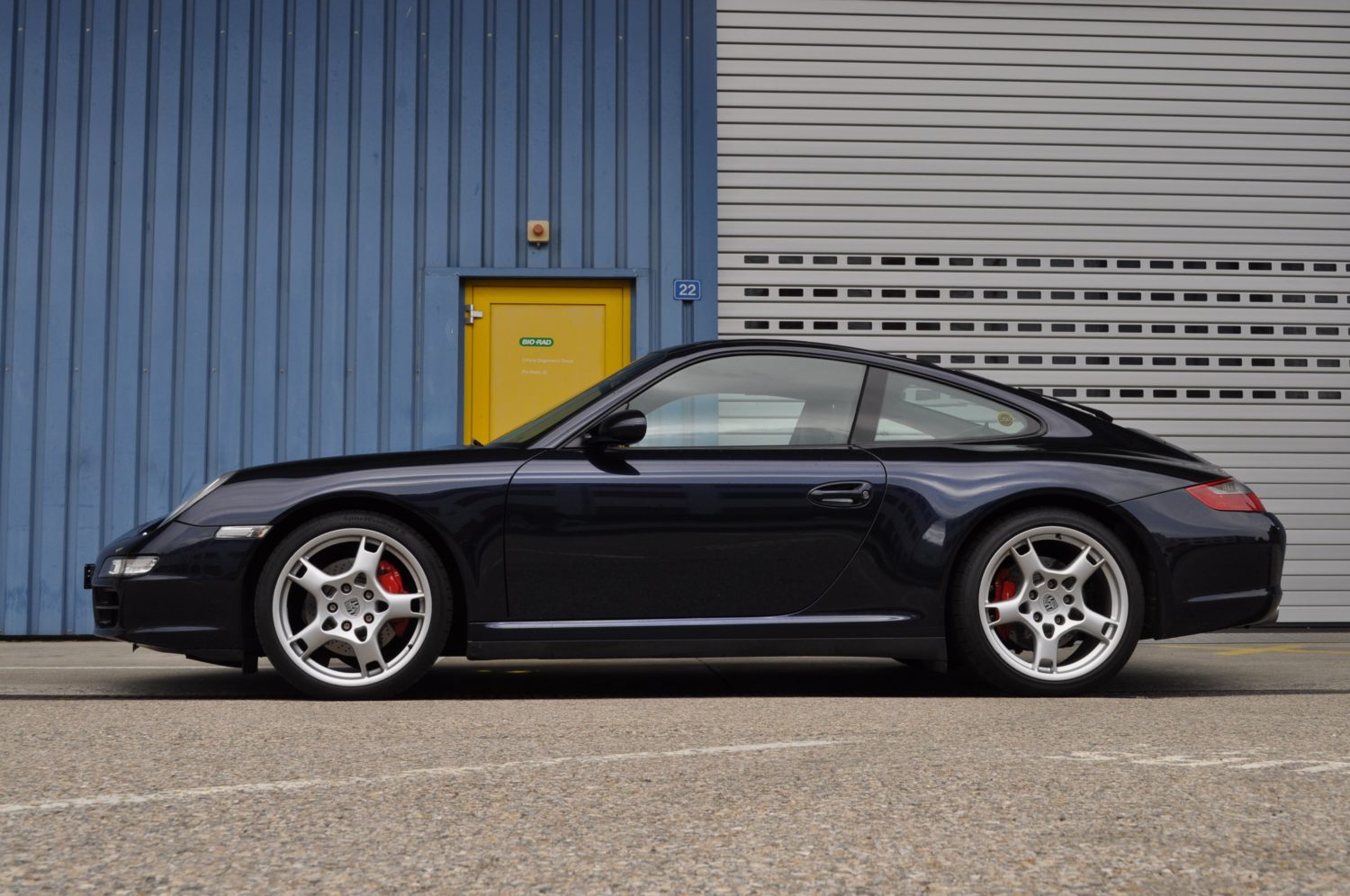
Quick Answer
Should you buy a used Porsche 911? If you want an iconic sports car that is a great value, amazing to drive, and reliable, the answer is YES. Whether your budget is $15,000 or $100,000, the Porsche 996, 997, and 991 are awesome cars for everyone. Read the rest of our used Porsche 911 buyer’s guide to learn which model is right for you.
Introduction to Used Modern Porsche 911s
Porsche…there is no substitute, right? If you’re in the market for a premium sports car, you should at least consider a Porsche 911. Just a few years ago, I was in your exact shoes. After 10 years of lusting after an iconic sports car, I decided to take the plunge. I cross-shopped the Porsche 911, Acura NSX, and Aston Martin V8 Vantage. I researched these vehicles for nearly three months before ultimately purchasing a 2010 Porsche 911 Carrera S. For me, it came down to overall performance, driving precision, reliability, and value.
A used Porsche 911 could be right for you if:
- You want an iconic sports car that you will still enjoy in 20 years.
- The overall driving experience is more important to you than straight line acceleration.
- You want a sports car that is also a reliable daily driver.
- Owning a sports car makes no financial sense, so value is important to you.
- Your days of flashiness and obnoxiousness are over; you prefer a classy car that doesn’t draw a lot of attention.
Let’s start by learning about the different used, modern Porsche 911 generations.
Porsche 911 / 996 (1999-2005)
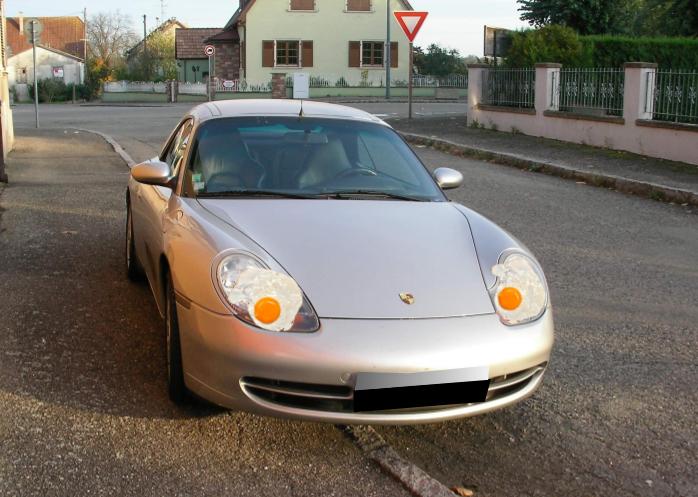
“File:Porsche 996 Carrera (1997) convertibles – avant.jpg” by Gzen92 is licensed under CC BY-SA 4.0
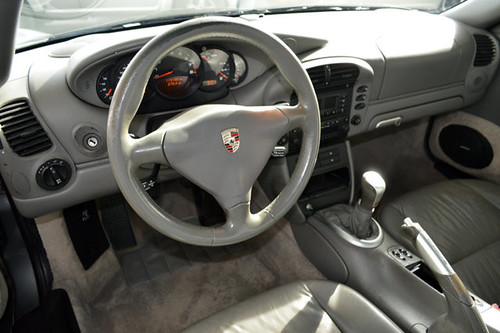
“Beautiful Silver 2002 Porsche 996 Coupe 6 Speed Vertexauto.com Interior 2” by VertexAuto.com is licensed under CC BY 2.0
History
Porsche released the 996 generation in the United States in 1999. It represented a radical departure from 911 generations of the past for a few reasons. First, Porsche replaced the traditional air-cooled, flat six engine with a water-cooled engine. This allowed Porsche to comply with more strict emission standards while creating a more powerful, fuel efficient, and reliable engine.
Second, while Porsche kept the basic silhouette of the 911, Porsche went with a more bubbly design. Many long-time enthusiasts criticized the move away from the iconic round headlights to the “fried egg” headlights. Porsche continued the bubbly design theme into the interior. Prior 911 generation interiors utilized horizontal lines in their designs. However, the 996 interior, from the dashboard to center console to door cards, received the rounded off, bubbly treatment. Additionally, most people will find the interior build quality to be pretty bad compared to modern standards.
Despite the lackluster reception from Porsche enthusiasts, the 996 along with the Porsche 986 Boxster, helped save Porsche from the brink of financial disaster. Compared to just over 67,000 units of the prior 993 generation sold, Porsche sold over 170,000 996 units worldwide.
Performance
996.1 (1999 – 2001 Carrera trims)
The 996 received numerous performance upgrades over the prior 993. Porsche initially offered the 996 only in the naturally aspirated Carrera trim. However, you could select from coupe to cabriolet, rear wheel drive to all-wheel drive, and 6-speed manual to 5-speed automatic (aka Tiptronic). It featured a 3.4 liter flat-six with 296 horsepower and 258 ft-lbs of torque. Paired with a 6 speed manual, the 2,900 pound 996 can do 0-60 mph in around 5 seconds and finish the standing quarter-mile in around 13.5 seconds. That was fast in 1999 and still respectable by today’s standards.
However, the 996 received the biggest performance improvement in the handling department. Prior 911 generations were known for snap oversteer (aka lift off oversteer) because their engines sit behind the rear axle. When entering a corner, a 911 driver would have to modulate the throttle to keep weight over the rear tires. If you go into a corner too fast and abruptly lift off the throttle, the vehicle’s weight will shift forward and cause the rear tires to lose traction. This can lead to snap oversteer, which is why journalists called the first 911 Turbos “the widow maker.” To mitigate snap oversteer, Porsche revised the 996’s suspension and threw in Porsche Stability Management (PSM) to keep drivers out of trouble. As a result, you can drive a 996 faster more easily than you can prior 911 generations.
996.2 (2001 – 2005 Turbo & 2002 – 2005 Carrera trims)

996 Turbo (Image by votoapp from Pixabay)
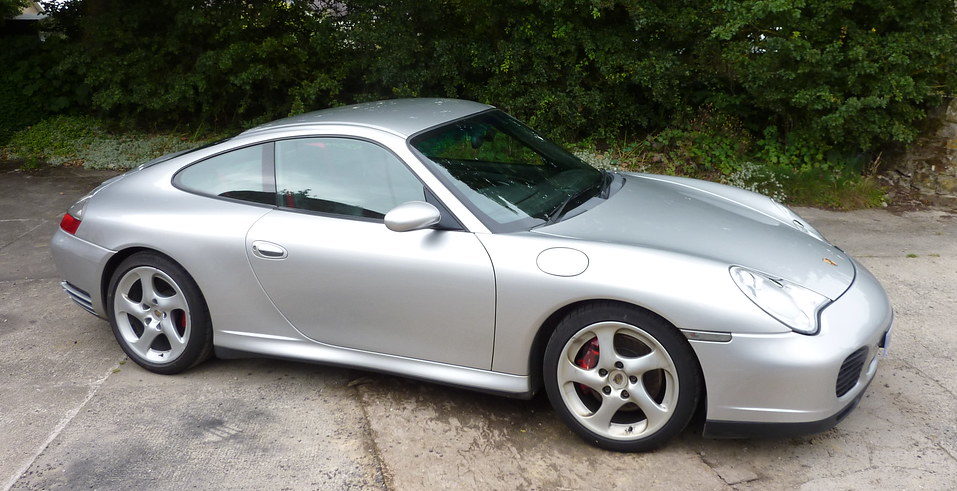
Porsche 911 Carrera 4S (996.2) (“Car cleaning” by Bryn Pinzgauer is licensed under CC BY 2.0)
If you care about straight line acceleration as much as handling, the 996 Turbo could be your answer. In 2001, Porsche released the grand daddy Turbo model. The 996 Turbo features revised, more angular headlights and the distinctive air intake vents on the rear quarter panels. The 911 Turbo combines excellent handling, precision, and straight line performance.
The 996 Turbo features a powerful, turbocharged 3.6 liter flat-six that produced 415 horsepower and 413 ft-lbs of torque. Combined with all-wheel drive, this means the 996 Turbo isn’t your old-school Dodge Challenger Hellcat. The 996 Turbo can put all its power down to the ground, which allows it to sprint from 0-60 mph and complete the quarter-mile in 4 seconds and 12.5 seconds respectively. Still not impressed? Find a 996 Turbo with the X50 package because this option bumps power to 450 horsepower. You can also slap on a performance ECU chip, bigger intercoolers, and a full exhaust system and push the 996 Turbo to over 500 horsepower.
In 2002, Porsche carried over the revised headlights to the 996 Carrera models (aka 996.2) and upgraded the engine to a 3.6 liter flat-six producing 320 horsepower and 273 ft-lbs of torque. This allowed the 996.2 Carrera models to shave off a couple tenths of a second 0-60 mph and in the 1/4 mile.
Reliability
Compared to other premium sports cars of its era, the 996 is a relatively reliable car. Porsche used a 3.4 liter M96 engine for the 996.1 Carrera, then later used a 3.6 liter version starting in 2002. With 20 years passing, we know what the major 996 issues are.
The engine’s crankshaft connects to an intermediate shaft (IMS) that drives the camshafts. The IMS uses a sealed bearing which can fail. If this happens, the entire engine is ruined. 996 experts estimate the IMS issue affects around 5% to 10% of M96 engines. The other issue on the M96 engine is a leaky “rear main seal” (RMS). Fortunately, the RMS issue is not catastrophic and you can easily spot it because the engine will leak oil. However, don’t let these issues deter you. A mechanic can proactively fix these issues for around $3,000.
The 996 Turbo uses a very reliable Mezger engine and doesn’t suffer from the IMS and RMS issues. Porsche designed the Mezger engine for Le Mans racing, so it had to be able to withstand the toughest abuse. There’s only one real issue to call out on the 996 Turbo, which happens to be a small, but expensive issue.
On the 996 Turbo engine, there’s a coolant line that is glued into the water pump housing. Over time, the glue on the coolant line can fail. This can cause a minor coolant leak and, in some cases, a major coolant leak if the coolant line completely detaches from the water pump housing. While this is a minor issue, you must remove the entire engine to fix it. We suggest you factor an additional $3,000 into your budget.
Value – GREAT
The Porsche 996 is a great value today. It provides arguably the most visceral driving experience of any 911. It feels small compared to later 911 generations, has telepathic steering, and has just enough electronic aids to keep you out of trouble. Despite the “fried egg” headlights, the 996 has a beautiful silhouette, especially the wide body Carrera 4S and Turbo models. Fortunately for car buyers who prioritize driving dynamics over looks, this makes the 996 THE BEST value Porsche 911 you can buy today.
996 prices vary drastically by trim. As of 2020, the most desirable GT3 and GT2 trims can fetch over $80,000 and $140,000 respectively. The most affordable 996 will be the 1999 to 2001 Tiptronic Cabriolet variants, which are priced around $13,000 to $18,000 for your typical examples. Generally, for a low mileage, 6-speed manual coupe, expect to pay between $20,000 to $30,000 for a Carrera model and $45,000 to $60,000 for a Turbo or Turbo S.
Let’s cover two other very important considerations when buying a used Porsche 911.
Depreciation
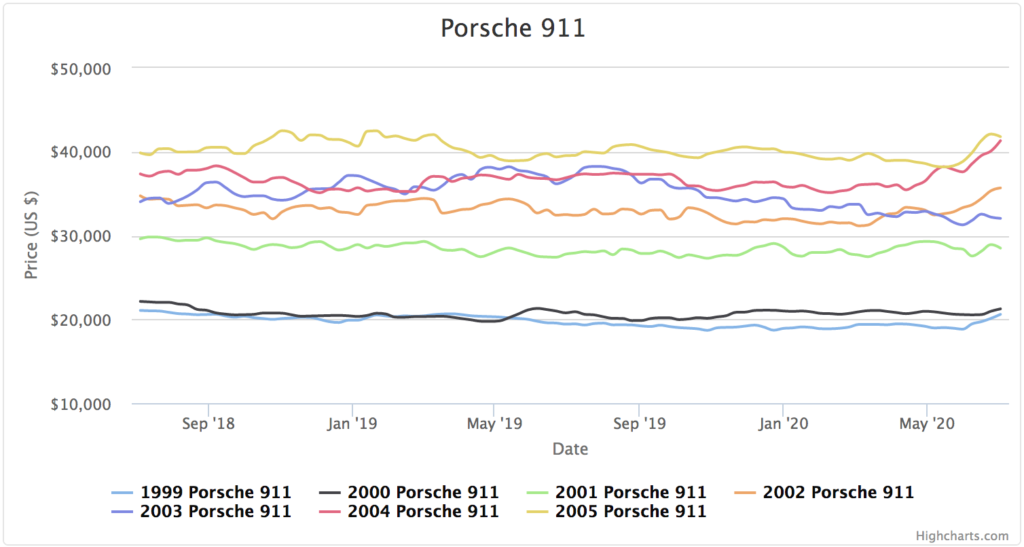
Porsche 996 value trends from www.cargurus.com
Depreciation is typically the largest expense when purchasing a new car. Fortunately, with most 996 models being nearly 20 years old, depreciation isn’t really a factor. According to CarGurus.com, 996 prices have remained virtually flat over the last two years and some years have actually appreciated by ~10% in the last year. This makes the 996 a tremendous value because you can essentially drive it for several years and sell it later for not much less than you paid for it.
Maintenance
So, let’s move onto what you’re probably wondering. Are Porsches expensive to maintain? The short answer is yes…compared to an ordinary car. Porsches are more expensive to maintain because parts cost more and so does specialized labor. While a Ford or Toyota mechanic charges $70-$100 per hour, a Porsche mechanic can easily charge double for their specialized skills.
In a typical year of driving, expect to spend $300 to $800 on basic maintenance items such as an oil change, cabin air filter, windshield wiper blades, and fluid replacements. Every 30,000 to 50,000 miles, spend another $1,800 to replace the brake pads and rotors. Every 15,000 to 20,000 miles, expect to spend another $1,300 on a new set of premium tires like the Michelin Pilot Sport 4S.
Budget $2,000 per year for maintenance and unexpected repairs. However, you can save a lot of money by doing some of the work yourself and using an honest, independent mechanic. Here at www.eCarGuides.com, you can find do-it-yourself (DIY) tutorials for all the routine maintenance services on modern Porsches. We also help you find highly rated, independent Porsche mechanics in your area.
Porsche 911 / 997 (2005-2012)
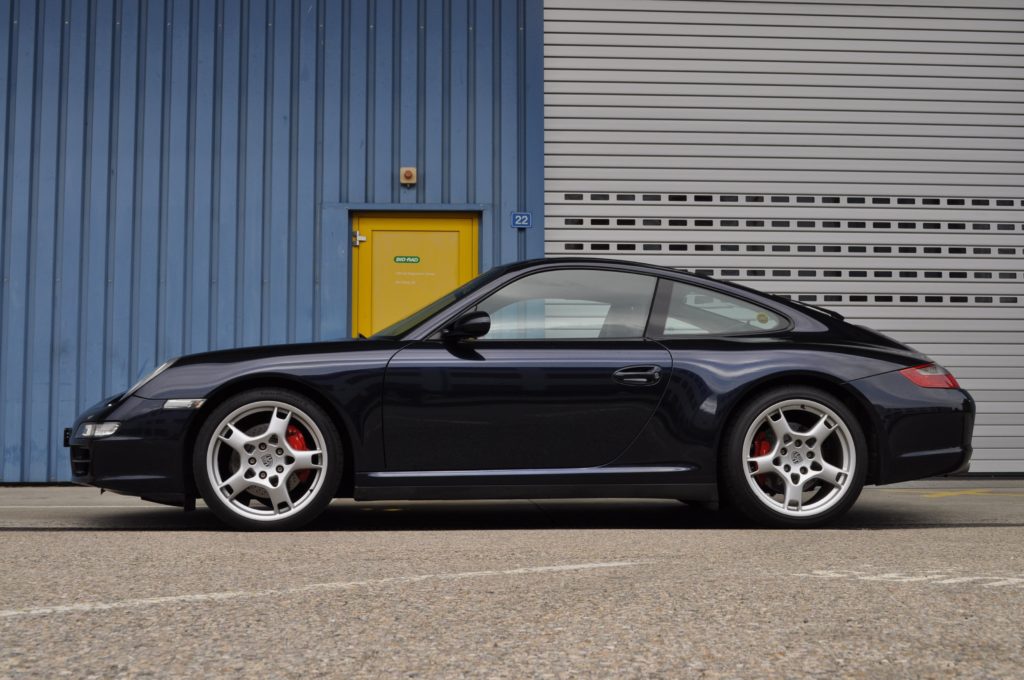
Image by oktagon1 from Pixabay
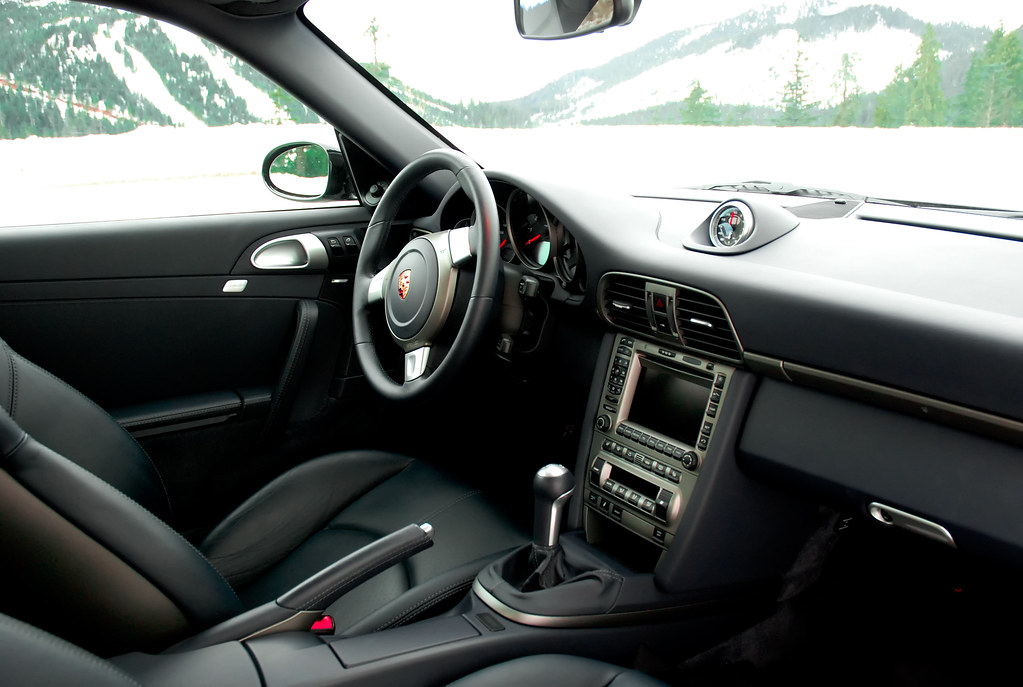
“The Porsche Carrera 997” by Urban Mixer is licensed under CC BY-SA 2.0
History
In 2005, Porsche released the 997. The 997 pleased enthusiasts by returning to the traditional 911 form. Porsche replaced the fried egg headlights with round ones and crafted an interior with excellent build quality. Underneath the exterior, Porsche primarily evolved the 996 chassis into the 997. The 997’s wheelbase, at 92.5 inches, remains relatively unchanged from the 996. However, the 997 did grow about 1.5 inches wider and 175 pounds heavier.
It’s also important to point out that the 997 came in two generations commonly referred to as the 997.1 and 997.2. Most notably, the 997.2 introduced new direct-fuel injection (DFI) engines across the lineup. The 997.2 also first introduced the Porsche Doppelkupplung (PDK), dual-clutch automatic transmission across all trims and Porsche Torque Vectoring (PTV) in Turbo models.
The 997.2 Carrera models have revised front and rear fascias to accommodate new LED lighting. The 997.2 Turbo models just received revised rear fascias. The easiest way to differentiate a 997.2 from a 997.1 is by looking at the rear tail lights. The 997.2’s tail lights are curved on the bottom while the 997.1’s are straight. Other minor improvements to the 997.2 include a revised navigation system and climate control interface.
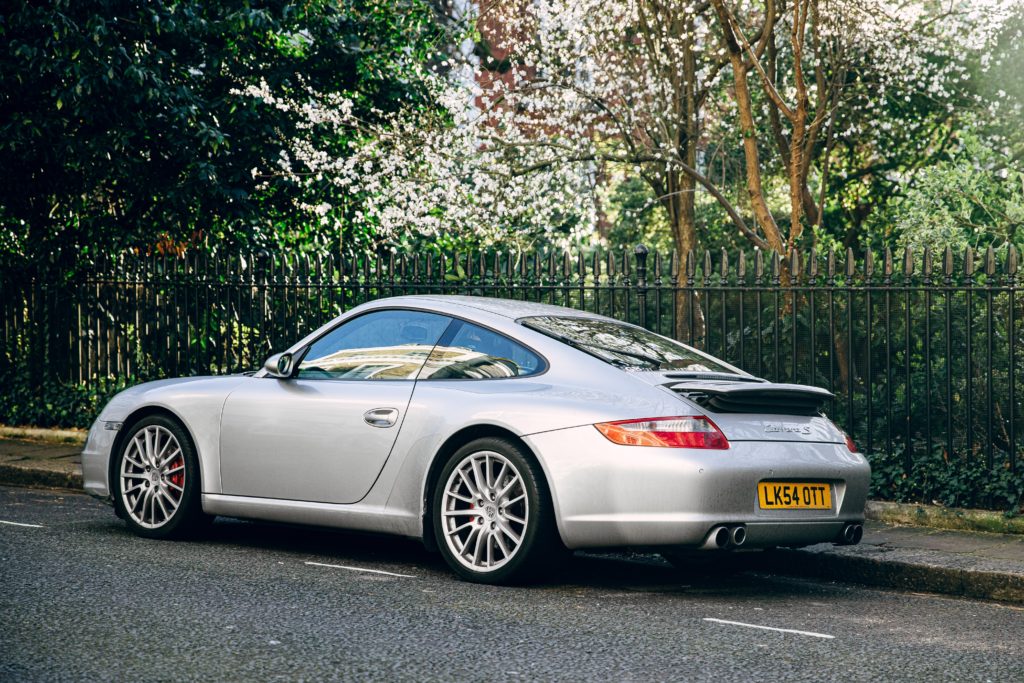
Porsche 911 (997.1) with squared off tail lights (Photo by Andrei Ianovskii on Unsplash)
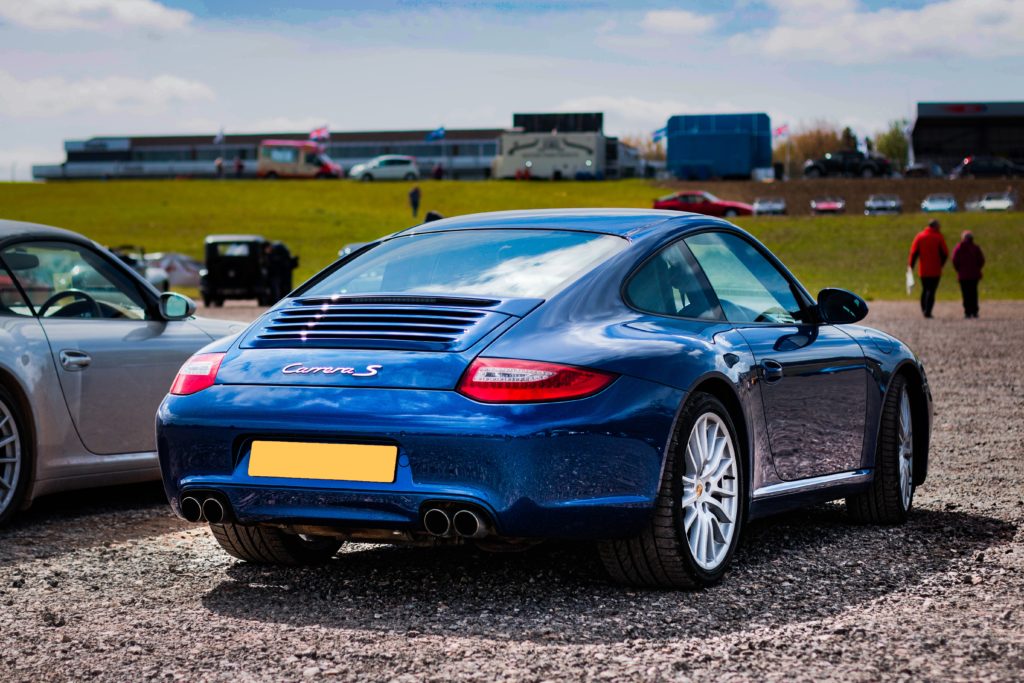
Porsche 911 (997.2) with revised tail lights and rear bumper (Image by Toby Parsons from Pixabay)
Performance
The 997 received numerous performance enhancements over the 996 from additional power, larger brakes, revised suspension, and improved stability management. Additionally, Porsche introduced Porsche Active Stability Management (PASM) which allows the 997 to actively adjust its dampers to suit road conditions. Here are the most notable performance improvements across the 997 lineup.
997.1 Carrera Models (2005-2008)
Base models have a revised version of the 3.6 liter M96 engine (known as the M97), which produces out 325 hp and 273 ft-lbs of torque. S models use a 3.8 liter version of the M96, which produces 355 horsepower and 295 ft-lbs of torque. The S models also use larger brakes borrowed from the 996 Turbo. As a result of the power increases, 997.1 base models could do 0-60 mph in around 4.8 seconds and the 1/4 mile in around 13.0 seconds. S models could do 0-60 mph in 4.5 seconds and the 1/4 mile in 12.8 seconds.
997.1 Turbo (2007-2009)
Porsche made numerous enhancements to the 997.1 Turbo over the 996 Turbo. The 996 Turbo uses a revised version of the prior Mezger engine. Porsche increased power from 415 to 480 hp and torque from 413 to 460 ft-lbs. Additionally, Porsche leveraged variable geometry turbochargers to reduce turbo lag and give the 997.1 Turbo a more usable power band. The help manage the extra power, Porsche introduced Porsche Traction Management (PTM) and gave the 997.1 Turbo more power brakes.
The 997.1 Turbo also marks the first time where the Tiptronic transmission provides faster acceleration than the manual transmission. Since the Tiptronic transmission can produce boost during launches and shift faster than a manual transmission, the 997.1 Turbo can do 0 to 60 mph and the quarter-mile in respectively 3.5 seconds and 11.8 seconds. Manual transmission versions are slower by a couple tenths of a second.
997.2 Carrera Models (2009-2012)
Porsche revised the entire powertrain on the 997.2. Porsche ditched the M97 engine in favor of a direct fuel injection (DFI) engine. The new DFI engine is not only more powerful, but achieves better fuel economy and reduces emissions. Base models feature a 3.6 liter, flat-six DFI engine with 345 hp and 287 ft-lbs of torque. S models feature a 3.8 liter version with 385 hp and 310 ft-lbs of torque.
Both base and S models could be equipped with Porsche’s new 7-speed PDK transmission. PDK combined with the Sport Chrono option gives the 997.2 launch control, which significantly reduces 0 to 60 mph times. Base models with PDK can sprint 0 to 60 mph in 4.5 seconds and complete the 1/4 mile in just 12.8 seconds. S models can do 0 to 60 mph in just 4.0 seconds and the 1/4 mile in 12.4 seconds.
997.2 Turbo (2010-2013)
In 2010, Porsche released the 997.2 Turbo, which can be distinguished from the 997.1 Turbo by the revised LED tail lights and center lock wheels. The second generation Turbo received the PDK transmission and a new DFI engine putting out 500 hp and 480 ft-lbs of torque. The Turbo S model received 530 hp and 516 ft-lbs of torque, which allows it to propel from 0 to 60 mph in less than 3 seconds and complete the 1/4 mile in just 11 seconds flat.
During this era, Porsche also had to make sure the 911 Turbo could compete against its more recently released competitors such as the Audi R8 and Nissan GTR. Porsche revised the 997.2 Turbo suspension and introduced Porsche Torque Vectoring (PTV). As a result of the performance improvements, the 997.2 Turbo lapped the Nürburgring Nordschleife in just 7:39 minutes versus the 2008 Nissan GTR’s time of 7:54 (test conducted by Porsche).
Reliability
The 997.1 Carrera models are more reliable than their equivalent 996 models. However, they can still suffer from the same IMS issue. Early 2005 vehicles have a higher change of IMS failure while experts estimate 2006 to 2008 vehicles only have around a 1% failure rate. To be on the safe side, you can still have a mechanic install an IMS bearing retrofit kit for $2,000 to $3,000. The 997.1 Turbo proves to be as reliable as the previous 996 Turbo though Porsche did not resolve the coolant line issue.
Moving onto the 997.2 generation, the new DFI engines in the Carrera and Turbo models have proven to be extremely reliable. These engines do not use intermediate shafts, so you don’t have to worry about the IMS issue. Additionally, owners aren’t reporting many instances of carbon buildup, which is common on Audi and BMW DFI engines.
With both the 997.1 and 997.2 naturally-aspirated and turbo engines, a few owners have reported instances of bore scoring (aka cylinder scoring due to metal on metal contact). However, this issue seems to only affect a very small percentage of vehicles and is more likely to affect vehicles in cold weather climates. If you plan on purchasing a 997 and want peace of mind, you can have your mechanic borescope the engine’s cylinders during the pre-purchase inspection. Other than the issues mentioned here, 997 is proving to be extremely reliable.
Value – Good
The 997 is also a good value by today’s standards. It’s new enough to have modern performance, but isn’t so new that the analog driving nature is gone. The 997 is a much better looking car than the 996, but this makes it harder for you to get as good of a deal on one. As with the 996, 997 values will vary based on the exact variant. On the cheap end of the spectrum, you can get a high mileage 997.1 Carrera Cabriolet with Tiptronic transmission for under $30,000. On the high end, a 997.2 GT3 RS 4.0 will set you back well over $300,000. In general, expect to pay around $45,000 to $55,000 for a nice 997.2 Carrera S or 4S. Turbo models range from around $55,000 for a 997.1 Turbo Cabriolet with Tiptronic to around $100,000 for a 997.2 Turbo S.
Depreciation
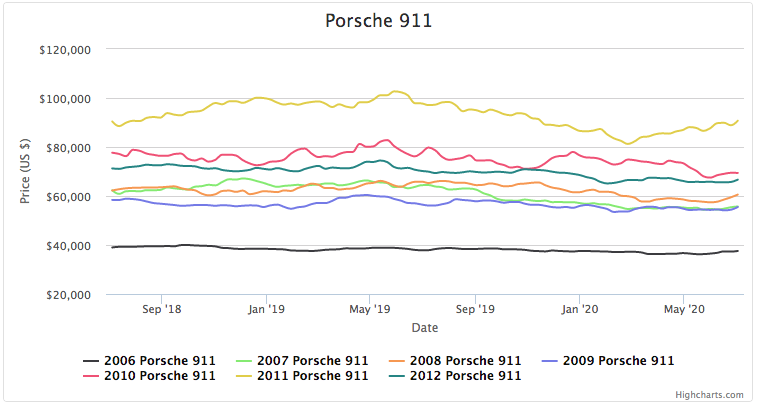
Porsche 997 value trends from www.cargurus.com
Let’s talk about depreciation. As shown in the data above from CarGurus.com, 997 values have been slowly depreciated by ~6% overall in the last two years. But, we need to dig into the nuances to understand what models are depreciating the most. More expensive, non-special models like the 997 Turbo and Turbo S are still depreciating. This is corroborated by the steeper depreciation curves for the model years with higher average prices. The average price for 2011 model year is the highest and has been appreciating, but this is largely driven by the astronomical rise in GT3 RS and GT3 RS 4.0 prices. Manual transmission, low mileage 997.1 S models have been hovering around $40,000 while their 997.2 counterparts have been hovering in the $50,000 price range.
In my personal experience, after owning my 2010 911 Carrera S for 5 years and putting 15,000 miles on it, the car has depreciated about $7,000. While this is not bad at all for a premium sports car, it’s by no means insignificant and should be factored into the total cost of ownership. To estimate how much depreciation you could encounter if you were to purchase a 997, you can use the following values, which are conservative, as depreciation floors:
- 997.1 Carrera base models – $15,000
- 997.1 Carrera S models – $20,000
- 997.2 Carrera base models – $25,000
- 997.2 Carrera S models – $30,000
- 997.1 Turbo – $40,000
- 997.2 Turbo models – $50,000
- GT models – Minimal depreciation if any
Maintenance
Maintenance and other running costs on a 997 should be a bit lower than on a 996 given its newer age. Expect to budget $1,500 per year for routine maintenance and small repairs. Or, if you’re willing to do your own maintenance, you can get away with spending around $800 per year.
Total Cost of Ownership from My Experience
In my 5 years of owning my 997.2 Carrera S, I replaced the tires and brakes once, conducted oil changes each year, and replaced the fluids and filters. By doing all of my maintenance and minor repairs myself, I’ve managed to spend less than $3,200 over the past 5 years (with the tires and brakes making up the majority of the expenses). Also, with the 997 as my second car, I pay around $900 a year for full coverage insurance. Factoring in gas, registration, maintenance, depreciation, etc, owning my 997 has cost me around $4,000 per year. Not bad huh? For more details check out my cost of ownership video below.
Porsche 911 / 991 (2012-2019)

“DSC_3461” by TheCarSpy is licensed under CC BY 2.0
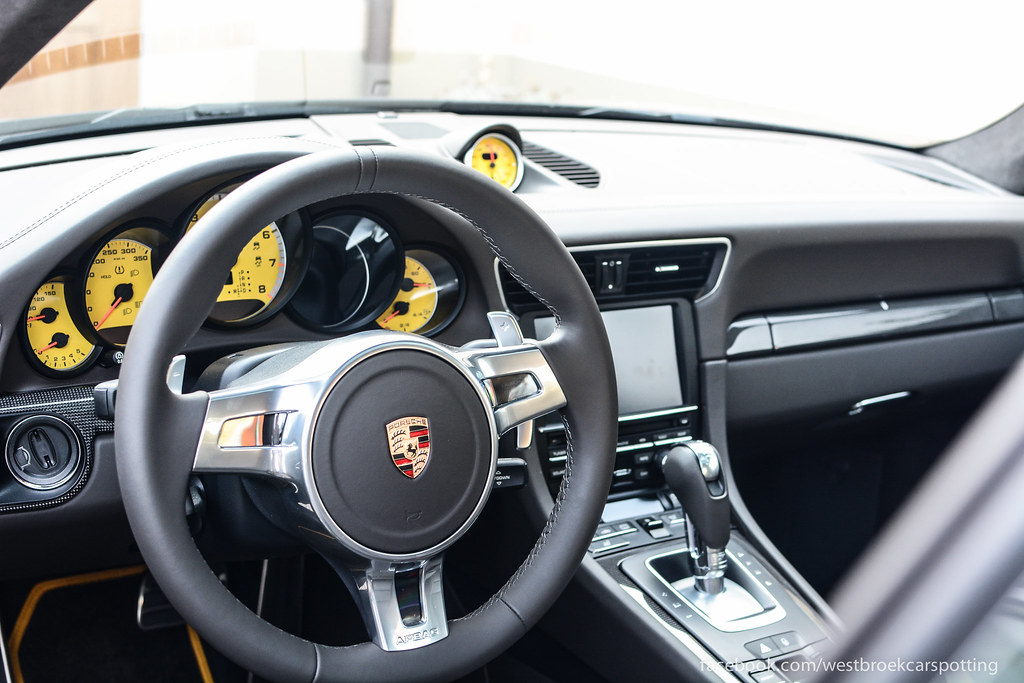
“Porsche 991 Turbo S” by WestbroekPhotography is licensed under CC PDM 1.0
History
Is newer always better? With Porsche, the latest generation is almost guaranteed to have better performance than the prior generation. In 2012, Porsche released the all new 991 which represented the biggest advancement to the 911 since the 996. The 991 maintained much of the 997’s silhouette, but the proportions are more muscular and round. The interior received the Panamera center console treatment, which is raised as it connects to the dashboard.
The 991 represents two major milestones for the 911. The 991.1 (2012-2016) marked the shift of the 911 from a hydraulic to an electric steering rack. While Porsche makes arguably the best feeling electric steering rack today, Porsche enthusiasts claimed it could not match the feel of the 997’s hydraulic steering rack.
Then in 2017, Porsche unveiled the 991.2 which was the first time all 911 models became turbocharged. The 991.2 also received revised front and rear fascias to differentiate it from the 991.1. As expected, Porsche enthusiasts decried the addition of the turbochargers as a move away from the 911’s characteristic, linear power. It’s undoubtable though that Porsche significantly improved the 991’s performance and allowed it to continue dominating its class.
Performance
Porsche made big improvements to the 991’s handling. Despite overall length growing by 2.8 inches, the 991 weighed about 50 pounds less than the 997. By increasing the 991’s length, Porsche was able to extend the wheelbase by 3.9 inches and move the engine nearly 3 inches closer towards the rear axle. This allowed Porsche to improve the 991’s front-to-rear weight distribution from 40/60 to roughly 42/58. These changes allow the 991 to be more balanced and stable at higher speeds.
In addition, Porsche offered new performance features such as dynamic engine mounts, Porsche Dynamic Chassis Control (PDCC), Porsche Torque Vectoring on select models. Later 991.2 models could also be optioned with rear wheel steering to improve low speed agility and high speed stability. Let’s take a look at the notable performance improvements across the two 991 generations.
Porsche 991.1 Carrera Models (2012 – 2016)
The 991.1 uses a revised version of the DFI engine from the 997.2. Porsche actually reduced displacement on the base models from 3.6 to 3.4 liters. However, power and torque increased to 350 hp and 287 ft-lbs. S models kept the 3.8 liter DFI engines, but power and torque increased to 400 hp and 325 ft-lbs. Porsche also refined the PDK transmission, so it could shift faster and better predict what gear to be in. In 2015, Porsche introduced the GTS models which bumped power to 430 hp.
In terms of straight line acceleration, the 991 models are only moderately faster than their respective 997 models. Base models with PDKs can do 0-60 mph in around 4.5 seconds and complete the 1/4 mile in around 12.8 seconds. S models can do 0-60 mph in around 4.2 seconds and complete the 1/4 mile in around 12.2 seconds. Additionally, the 991.1 received larger brakes over the 997. S models received larger, 6 piston brake calipers up front.
Porsche 991.2 Carrera Models (2017-2019)
In 2017, Porsche introduced a new 3.0 liter, turbocharged DFI motors for the 991.2 Carrera models. The base and S model engines are essentially the same, however, they have different turbochargers. While the base and S models received moderate power increases to 370 hp and 420 hp respectively, torque increased on both by nearly 40 ft-lbs.
The new motor gives the 991.2 much more usable low-end power and torque. As a result, the 991.1 Carrera can do 0 to 60 mph in under 4 seconds and complete the 1/4 mile in the low 12 second range. The S models can do 0 to 60 mph in around 3.5 seconds and complete the 1/4 mile in 11.5 seconds. And, if that’s not fast enough, you can add an ECU tune and aftermarket exhaust system, which will give you another 100 horsepower.
Porsche 991 Turbo Models (2014-2019)
Porsche produced the 991.1 Turbo from 2014 to 2016. It features a 3.8 liter flat-six with 520 hp and 487 ft-lbs of torque. The 991.1 Turbo S puts out 560 hp. In 2017, Porsche released the 991.2 which features updated front and rear fascias and 20 additional horsepower for both Turbo and Turbo S models.
The 991 Turbo still remained the king of the drag strip in the premium sports car segment. In a 991.1 Turbo S, MotorWeek hit 0-60 mph 2.9 seconds and completed the 1/4 mile in just 10.8 seconds. In a 991.2 Turbo S, Motor Trend ran a 10.5 second quarter mile. Not even a Tesla Model S P100D can top those times.
The other important thing to call out about the 991 Turbo models are their impressive handling. The GT3 is the 911 that gets all the attention when it comes to handling, but the 991 Turbo is no slouch. In the hands of everyday drivers, the 991 Turbo is actually faster around most circuits. Despite its weight, the 991 Turbo can out accelerate the GT3 RS on the straightaways and on corner exit thanks to its power advantage, all-wheel drive system, PDCC, PTV, and rear-wheel steer.
Reliability
The 991 is extremely reliable just like its 997.2 predecessor. In 2019, JD Powers ranked Porsche as the second most dependable brand behind Lexus. JD Power also ranked the 911 as the most dependable car model!
Value – Fair
The 991 is a good value sports car compared to its peers. However, compared to the 997 and 996, the 991 is only a fair value. To get into a 991, expect to shell out at least $50,000 for a 991.1 base model in good conditions and typical mileage. A 991.1 Carrera S or 4S will run you from around $60,000 to $70,000. The cheapest 991.2 you can find will set you back at least $70,000. As for maintenance and running costs, you can expect to spend a bit more on a 991 than a 997. The 991 uses more technology, which adds complexity and costs in the event you have an issue. However, depreciation is what really drags down the 991’s overall value.
Depreciation
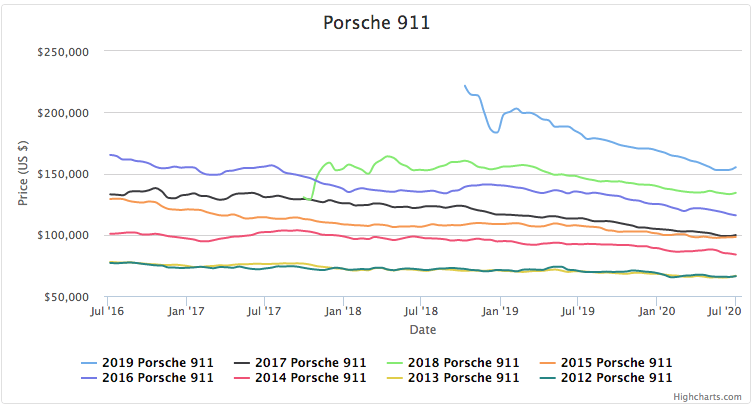
Porsche 991 value trends from www.cargurus.com
With the 991 being a much newer 911, there is simply more room for these vehicles to depreciate. According to CarGurus.com data, 2017 to 2019 991s have depreciated by over 20% in the last two years. 2012-2016 models have depreciated by around 6% in the last year. Unsurprisingly, expect less depreciation on earlier model year 991s.
Additionally, the options your 991 is equipped with will also play a role in its resale value. 991 coupes with manual transmissions and rare color combinations and options will hold its value better than your rental car variant. Definitely factor in these depreciation rates into your total cost of ownership. Insurance and registration will also be more expensive on a 991 given its newer age. All-in-all, owning a 991 will be more expensive than owning a 997 or 996.
Final Recommendations on Buying a Used Porsche 911
The 911 is perhaps the most iconic sports car for good reason. Used water-cooled 911s offer a lot of value, reliability, practicality, performance, and overall driving engagement that is hard to match. While there may be a better sports car for you, don’t overlook the 911. Test drive one and see how you like it.
Here’s a summary of my recommendation for you.
The 996 is right for you if:
- You want to own a Porsche 911, but don’t want to spend over $25,000.
- The “fried egg” headlights don’t bother you that much.
- You want a truly analog car that will test your abilities as a driver.
- Infotainment, who needs that when you can listen to the engine?
The 997 is right for you if:
- You care about value, but you can’t stand the “fried egg” headlights.
- Modern performance and build quality are important to you.
- You want a sports car that will be very easy to live with and maintain.
The 991 is right for you if:
- You believe newer is better.
- While you’d love to own a 992, it’s just more than you are willing to spend on a toy.
- You want a sports car with all the modern creature comforts.
A used Porsche 911 is not right for you if:
- Handling? Driving experience? What? Let’s talk about horsepower and torque. Um…did you read the very first section of this article? I suggest you check out the C8 Corvette.
- Only the 996 is within my budget, but damn those fried egg headlights are ugly. Have you heard of the 987 Boxster and Cayman? Stay tuned for the 987 Buyer’s Guide that’s coming out soon 😉.
- But, but I really really want a 997 or 991. I don’t want a poor man’s Porsche. The Boxster and Cayman are every bit as pure of a Porsche as the 911 and are arguably better driver’s cars. But, I understand. Don’t settle. Save up until you can afford the 911 you want.u.
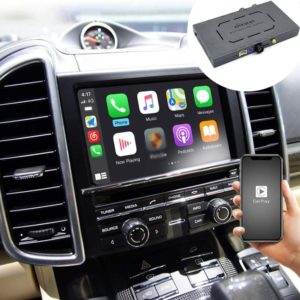
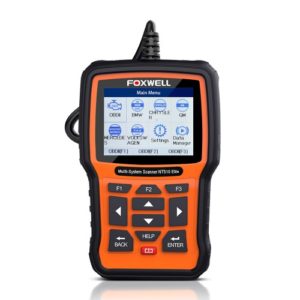
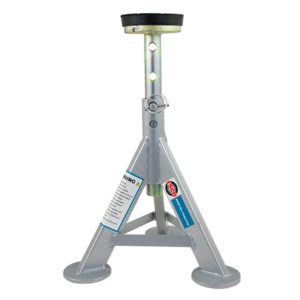
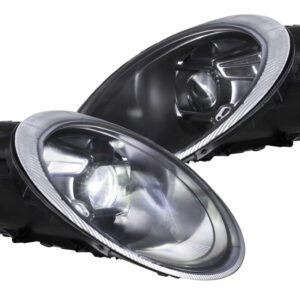
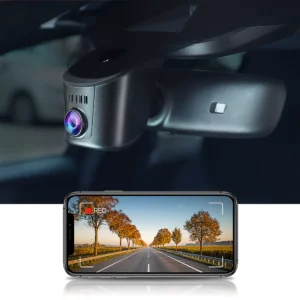
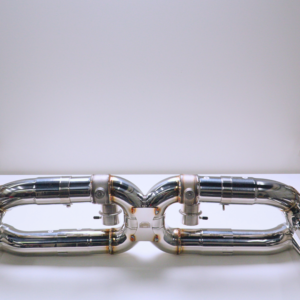

Dennis says:
Very thorough and insightful. I think I’ll go with a 996 because of the value. I love the 996.2 C2S. Turbos are nice too but still too expensive for me.
Guy says:
You may want to update the fully depreciated values for the 997. I keep an eye on that market (advertised prices anyway) and I would say your values are more than conservative, at least in today’s market. And for what it’s worth I dont see 997 values, particularly 997.2 values going much lower than they are now. Values in each category you list are mostly affected by mileage, condition and transmission, not age.
Just my take but my car’s value (997.2 base) has been changing very little in the last few years. There are few cars of that vintage that hold their value as well.
Dave Westhoven says:
Thank you for this well written article. I have just purchased a black 2010 Carrera 4S with 23K miles, PDK and a few other upgrades. It is my fist Porsche. I had just finished restoring and selling my 1967 Sunbeam Tiger. I wanted performance and beauty in this car and I have it.
Quite honestly I was a bit worried about maintenance costs and reliability but not so much any more.
Thank you.
Dan says:
Great summary, like you I went for a 997.2 Cab PDK and I love it. Because of the evolution of the 991 and refinements of the 997.2 I feel it’s the best suited to gain classic status in the long run…ya think?
Dennis @ eCarGuides says:
Dan, good pick. I do think you’re right that the 997 will become highly sought after in 5-10 years. You can see right now that 997 prices are holding pretty steady, which is a great sign. Enjoy your car and hope to see you back on the website!
Don Pacheco says:
Really want to get a 2017 Porsche 991.2! Looking to purchase this winter. Do you think it is better to buy in December or wait until spring of 2022?
Don Pacheco says:
I think the base carrera is still the best car for performance vs price. Maybe could get a slightly better price if I wait till early 2022 since the 2017’s will be 6 years old then??
Dave Ronyak says:
Excellent article! I am owner of a 2017 Carrera S purchased in March 2019 from a dealer as a CPO vehicle. My car has PDK, Sports Package, 14-way leather memory seats, full 2-tone leather interior, PDLS with LED headlights, PASM, heated steering wheel, heated and cooled seats, RWS, Glass Moonroof with powered shade, and Apple Car Play, and more. No issues whatsoever excepting the Car Play feature which was frequently falling out until I had the dealer replace the USB receptacle in the center console. And to my pleasant surprise, often over 30 MPG when taking a road trip. I swapped the OEM Pirelli tires for Michelin Pilot Sport 4S, and they are wearing very slowly despite my efforts to wear them out. All service to date has been performed by the selling dealership except I have done my own brake fluid changes… and the dealer has confirmed the low moisture level in the fluid during the annual oil changes and checkups.
En güvenilir bahis siteleri says:
En güvenilir bahis siteleri 2022 için hemen ziyaret et.
En güvenilir bahis siteleri says:
En güvenilir bahis siteleri 2022 için hemen ziyaret et.
En güvenilir bahis siteleri says:
En güvenilir bahis siteleri 2022 için hemen ziyaret et.
keywword says:
comment